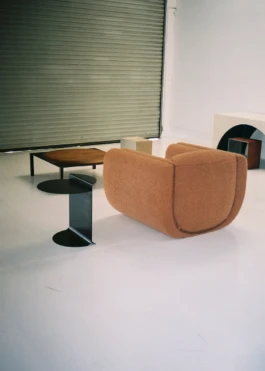
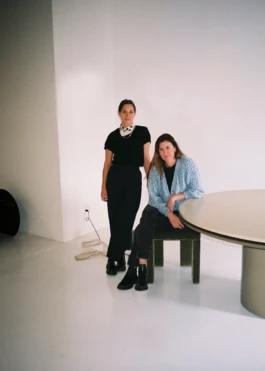
Estudio Persona
Emiliana Gonzalez and Jessie Young are both Uruguayan natives, who became collaborators after a chance encounter soon after moving to Los Angeles. In 2015 they formed Estudio Persona, giving way to a series of collections and collaborations that embody their own personal soft, feminine and meticulously-crafted style. Their new space also emulates these values, and like the duo is both incredibly warm and inviting.
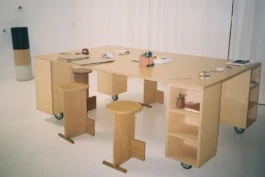
Tell me about family life and growing up in Uruguay?
Uruguay is a very small country with a small population. It can be a bit claustrophobic at times since you know pretty much everyone around you. Your future becomes sort of predictable and almost as it’s designed for you in a way. Family is a big part of your existence and it is a beautiful thing.
Although it’s far away from everywhere, Uruguay is a very progressive country that breeds its inhabitants with a strong belief in social justice. First country where women voted in the whole continent, first to legalize marijuana, amongst the first to legalize same sex marriage and abortion. The education level is amongst the highest in the continent, the literacy rate is 96%, so culturally people have a good knowledge. Even with a scarce multicultural population, you're destined to have a pretty good sense of history and culture.
“Family is a big part of your existence
and it is a beautiful thing.”
What was inspiring you both during your teenage / college years?
When I was in college, we organized several film series; the Iranian, Japanese and Korean ones were the ones that hit me the most. Abbas Kiarostami, Forough Farrokhzad, Akira Kurosawa, Yasujirō Ozu were amongst my most profound narrative constructions. Also Kim Ki-Duk’s Bad Guy had a big influence on the power of visual communication.
In my college years I joined the Fundación de arte Contemporáneo in Uruguay where I learned about Gillian Wearing, Pipilotti Rist, Mike Kelly, amongst others. The subtle work of Wearing’s “Signs that Say What You Want Them To Say and Not Signs that Say What Someone Else Wants You To Say” crosses the boundaries between private and public.
I think music was a big part of my teenage years, it was inspiration, identity, a sort of shelter, and connection with people, friends and the rest of the world.
Once in college submerging in design was not only inspiring, it really consolidated the desire to create.

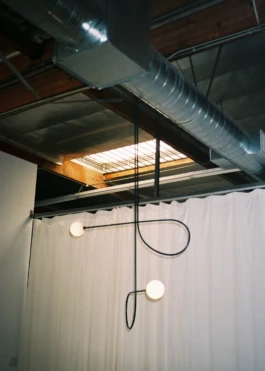
Is there anything in terms of your cultural identity and heritage that still comes through in your work today?
I’m sure there is more than what we can actually pinpoint. With both of us having moved here only 10 years ago, that is who we are and we can’t fight it. Uruguay is a country with a very eclectic visual language, it is not a country with strong native traditions, so the cultural influence from abroad has created a diverse canvas with overlapping styles that is natural to us.
It is also quite muted in color and melancholic. The use of leather and wood is quite traditional in Uruguay, using these materials always feels natural for us, creates a warmth and a timeless aspect.
When did the two of you meet and did the idea to form a practice happen quite quickly?
We knew each other from Uruguay, but properly met here in LA. Emi got offered an interiors project and was hesitant to get into it. We were hanging out one night when I overheard her speaking about this project, and it was I think the following day that I called her and said let’s do it. It was just the start of it all, everything moved pretty organically from there on.
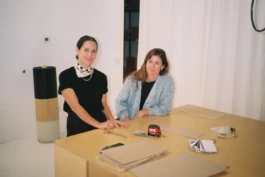

“At the same time, part of that isolation is what allowed us to start something, being able to look inside and not be distracted.”
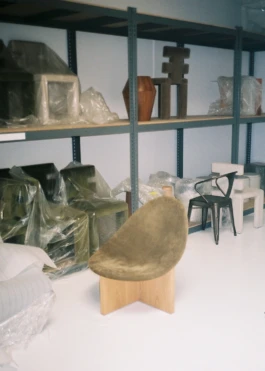
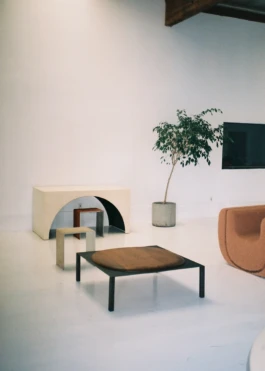
What drew you both to LA and what are some of the unique characteristics you’ve noticed in this extremely diverse city?
We ended up in LA after thinking it would be for a short period, because we each came with our family.
It felt like a very weird city at the beginning, actually still feels that way for moments. It’s so spread, nothing is on the surface, there is no visible connection. At the same time, part of that isolation is what allowed us to start something, being able to look inside and not be distracted.
Where did the name Estudio Persona originate from?
We both worked in the movie industry for several years back home in Uruguay. I just finished reading Liv Ullman’s Changing, after watching Persona. It was 2 and 2 together. Honoring the industry that gave so much to us, as well as the play with the words that worked with the new venture.
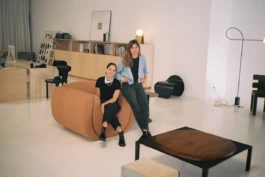
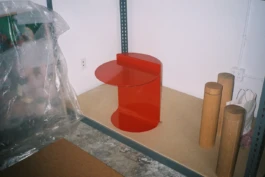
“We are lucky to have the opportunity to counterbalance each other creatively. This is a big part of our process, and it has quite a chaotic form.”
How does the design process play out between the two of you and where are you drawing inspiration from?
I would say we always try to feed our creative side, not only when we are designing, looking into architecture, going to see an art show, a performance, all these different practices help us in that search of something.
Most of our work starts with an abstract initial concept, sometimes just a fragment of an image, an expression. Usually one comes up with an idea that when explained, it starts being reshaped along the way, it is a very dynamic process, trying to bounce ideas until things align. We are lucky to have the opportunity to counterbalance each other creatively. This is a big part of our process, and it has quite a chaotic form.
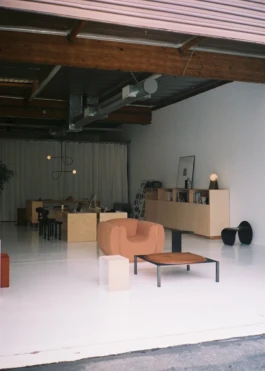
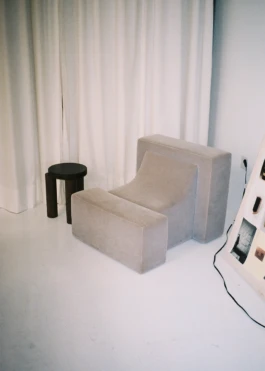
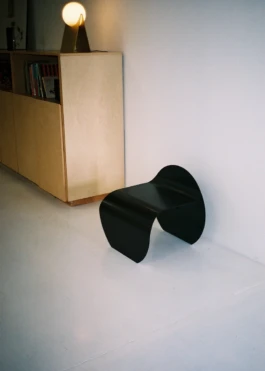
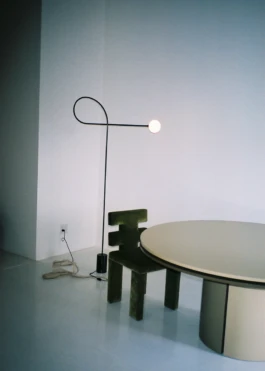
I know you like to use raw and natural materials so where are these sourced? And how are you fabricating the collection?
We source everything locally in Los Angeles. This comes with its limitations regarding design since we cannot get a hold of every material we’d like.
Your new space is both beautiful and calming so what was the vision here and who are some of the key people associated with the business?
Our previous space was conceived more as a showroom / workspace, that felt a bit disruptive on occasion, For this one we wanted to focus more on the creative side. I think creating needs to feel like some sort of ritual, away from chaos, in an inspiring environment.
In our new studio we share walls with Small Office, and Waka Waka, having them as neighbors shapes the idea of a design community and that exchange gives a larger meaning to all this.
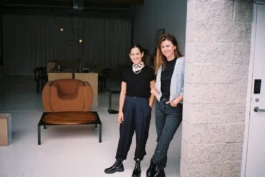
Any dream projects / partnerships you can think of?
Every partnership we’ve had has been very exciting. Each project has been different, from a seating collection to a table family and a lighting collection. It has challenged us in different ways and stimulates us in different ways.
Top tips in East LA?
Skylight Books
Proof Bakery
Virgil Normal

Estudio Persona

Emiliana Gonzalez and Jessie Young are both Uruguayan natives, who became collaborators after a chance encounter soon after moving to Los Angeles. In 2015 they formed Estudio Persona, giving way to a series of collections and collaborations that embody their own personal soft, feminine and meticulously-crafted style. Their new space also emulates these values, and like the duo is both incredibly warm and inviting.

Tell me about family life and growing up in Uruguay?
Uruguay is a very small country with a small population. It can be a bit claustrophobic at times since you know pretty much everyone around you. Your future becomes sort of predictable and almost as it’s designed for you in a way. Family is a big part of your existence and it is a beautiful thing.
Although it’s far away from everywhere, Uruguay is a very progressive country that breeds its inhabitants with a strong belief in social justice. First country where women voted in the whole continent, first to legalize marijuana, amongst the first to legalize same sex marriage and abortion. The education level is amongst the highest in the continent, the literacy rate is 96%, so culturally people have a good knowledge. Even with a scarce multicultural population, you're destined to have a pretty good sense of history and culture.
“Family is a big part of your existence
and it is a beautiful thing.”
What was inspiring you both during your teenage / college years?
When I was in college, we organized several film series; the Iranian, Japanese and Korean ones were the ones that hit me the most. Abbas Kiarostami, Forough Farrokhzad, Akira Kurosawa, Yasujirō Ozu were amongst my most profound narrative constructions. Also Kim Ki-Duk’s Bad Guy had a big influence on the power of visual communication.
In my college years I joined the Fundación de arte Contemporáneo in Uruguay where I learned about Gillian Wearing, Pipilotti Rist, Mike Kelly, amongst others. The subtle work of Wearing’s “Signs that Say What You Want Them To Say and Not Signs that Say What Someone Else Wants You To Say” crosses the boundaries between private and public.
I think music was a big part of my teenage years, it was inspiration, identity, a sort of shelter, and connection with people, friends and the rest of the world.
Once in college submerging in design was not only inspiring, it really consolidated the desire to create.


Is there anything in terms of your cultural identity and heritage that still comes through in your work today?
I’m sure there is more than what we can actually pinpoint. With both of us having moved here only 10 years ago, that is who we are and we can’t fight it. Uruguay is a country with a very eclectic visual language, it is not a country with strong native traditions, so the cultural influence from abroad has created a diverse canvas with overlapping styles that is natural to us.
It is also quite muted in color and melancholic. The use of leather and wood is quite traditional in Uruguay, using these materials always feels natural for us, creates a warmth and a timeless aspect.
When did the two of you meet and did the idea to form a practice happen quite quickly?
We knew each other from Uruguay, but properly met here in LA. Emi got offered an interiors project and was hesitant to get into it. We were hanging out one night when I overheard her speaking about this project, and it was I think the following day that I called her and said let’s do it. It was just the start of it all, everything moved pretty organically from there on.


“At the same time, part of that isolation is what allowed us to start something, being able to look inside and not be distracted.”


What drew you both to LA and what are some of the unique characteristics you’ve noticed in this extremely diverse city?
We ended up in LA after thinking it would be for a short period, because we each came with our family.
It felt like a very weird city at the beginning, actually still feels that way for moments. It’s so spread, nothing is on the surface, there is no visible connection. At the same time, part of that isolation is what allowed us to start something, being able to look inside and not be distracted.
Where did the name Estudio Persona originate from?
We both worked in the movie industry for several years back home in Uruguay. I just finished reading Liv Ullman’s Changing, after watching Persona. It was 2 and 2 together. Honoring the industry that gave so much to us, as well as the play with the words that worked with the new venture.


“We are lucky to have the opportunity to counterbalance each other creatively. This is a big part of our process, and it has quite a chaotic form.”
How does the design process play out between the two of you and where are you drawing inspiration from?
I would say we always try to feed our creative side, not only when we are designing, looking into architecture, going to see an art show, a performance, all these different practices help us in that search of something.
Most of our work starts with an abstract initial concept, sometimes just a fragment of an image, an expression. Usually one comes up with an idea that when explained, it starts being reshaped along the way, it is a very dynamic process, trying to bounce ideas until things align. We are lucky to have the opportunity to counterbalance each other creatively. This is a big part of our process, and it has quite a chaotic form.




I know you like to use raw and natural materials so where are these sourced? And how are you fabricating the collection?
We source everything locally in Los Angeles. This comes with its limitations regarding design since we cannot get a hold of every material we’d like.
Your new space is both beautiful and calming so what was the vision here and who are some of the key people associated with the business?
Our previous space was conceived more as a showroom / workspace, that felt a bit disruptive on occasion, For this one we wanted to focus more on the creative side. I think creating needs to feel like some sort of ritual, away from chaos, in an inspiring environment.
In our new studio we share walls with Small Office, and Waka Waka, having them as neighbors shapes the idea of a design community and that exchange gives a larger meaning to all this.

Any dream projects / partnerships you can think of?
Every partnership we’ve had has been very exciting. Each project has been different, from a seating collection to a table family and a lighting collection. It has challenged us in different ways and stimulates us in different ways.
Top tips in East LA?
Skylight Books
Proof Bakery
Virgil Normal